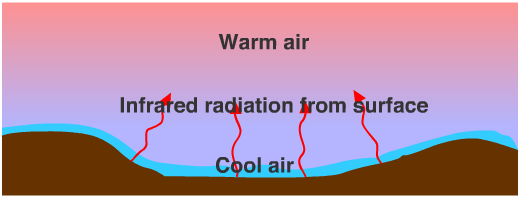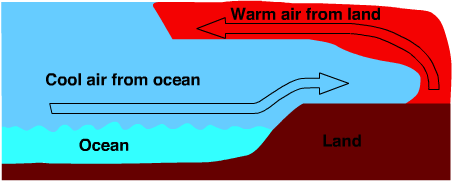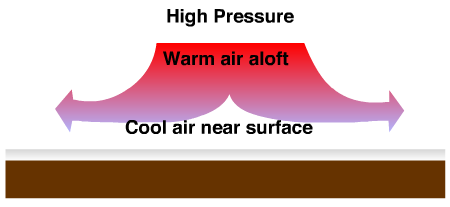Inversions
Under normal circumstances, air temperature tends to decrease with increasing elevation above the surface through the troposphere. Under particular conditions the lapse rate of temperature is reversed and temperatures increase with increasing elevation creating an inversion or inverted lapse rate of temperature.

Figure 5.9 Radiation inversion
A radiation inversion commonly occurs when the evening air is still and there are no clouds to trap heat. Surface temperature drops as longwave radiation emitted by the Earth escapes to space. Air in contact with the surface cools, but that at a higher elevation and not in direct contact with the earth remains somewhat warmer creating the inversion. Cool air will collect in depressions as air density increases and gravity pulls it down slope.

Figure 5.10 Sea breeze inversion
Sea breeze inversions occur along windward coasts bordered by cold ocean currents. The bottom layer of a warm maritime air mass originating over the ocean becomes cooler upon coming in contact with the cooler water bordering the coast. This creates cooler air near the surface with warmer air aloft.
 Figure
5.11 Subsidence inversion
Figure
5.11 Subsidence inversion
Areas dominated by high pressure are also subject to inversions. Subsidence inversions form when subsiding air undergoes adiabatic heating aloft, while air in contact with the surface remains cooler. Subsidence and subsidence inversions in association with high pressure are discussed in Chapter 6.